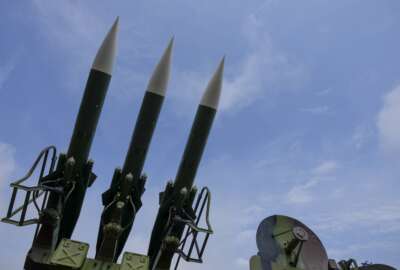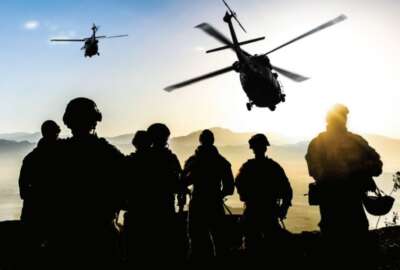Air Force hopes to boost cohesion, innovation as part of broad restructuring plan
For future deployments, Air Force leaders want to deploy entire wings of airmen, rather than cobbling together personnel from various commands and locations.
The Air Force is in the very early stages of a restructuring that could have a big impact on how airmen deploy for combat missions, and an even bigger one on how the service is organized. The overall goal is to get the Air Force more ready to fight against high-end adversaries, but there are still some big questions about how the concept will work.
The service first announced what officials called “sweeping” force structure changes in February. As to deployments, the biggest change is a new focus on wings, the Air Force’s largest collections of units. In the future, the idea is to deploy an entire wing to contingency or combat operations, rather than the current practice, which relies mostly on cobbling together personnel from various commands and locations to meet a given mission’s demands.
One major downside to the current approach is that airmen don’t start integrating with that team until they actually get to a combat theater, said Lt. Gen. Adrian Spain, the Air Force’s deputy chief of staff for operations.
“The major shift they’re going to see is when you’re part of a combat wing, your focus all the time is the combat wing mission. I don’t care if you’re a communications troop or a maintainer or food service technician, you’re going to be focused on how you do your job in a combat environment,” he told an Air and Space Forces Association event this week. “Right now, if I’m in a communications squadron as an example, I can be very innovative in the communications and cyber functional space. But I’m probably not going to go help out another squadron unless I’m asked. In this new model, where all of our functions are together towards a common purpose, the span of my ability to assist without really being specifically directed increases exponentially, because I’m watching other people do something that I can help them with.”
Three types of wings
Spain said the wings themselves are also being reimagined. Air Force officials imagine three different types as what they’re calling the service’s main “units of action.”
One will be deployable combat wings — units that have everything they need, including a full command staff, to operate independently. Another will be combat generation wings — units that can send some elements to where they’re needed. A third would be wings that mostly remain at their home stations to operate the Air Force’s base infrastructure full-time.
But Spain said officials are still examining how many airmen that new structure will require.
“One of the tasks [Air Force Secretary Frank Kendall] gave us when we started down this path was to, as much as possible, be resource neutral. And at a macro level, I think the Air Force has most of the resources it needs to stand up at least the initial stages of the combat wings, they just aren’t all in the right place around the world,” he said. “So there will have to be a discussion at some point about moving forces around to to make whole some of these combat generation wings that could be deployable combat wings. In terms of overall resourcing, I think the important question for the service is whether this structure is right. Do we have the details right on what goes into a combat wing and what goes into a base command? When the combat wing leaves, are we still providing a level of service that is appropriate and relevant for the the forces, families and civilian population that are left behind?”
The Air Force started testing the concept of deploying with more cohesive units last October with a project called Expeditionary Air Bases. The next test will come via what the service is calling Air Task Forces. Last month, officials announced six pilot locations to host those new deployable forces. Spain said they will be smaller-scale versions of the deployable wings the Air Force wants to eventually implement.
“When the secretary approved this as a pathfinder, he was aware that we needed to do some work to get ourselves to what will eventually be a combat wing. So the air task force, as we set it up, has the same building blocks as the combat wing will have — it is just aggregated from about four to five different locations as opposed to one,” he said. “What we intend to do is to run them through a full AFFORGEN training cycle, deploy them starting in October 2025, and then observe and aggregate the lessons from their implementation in both the Pacific and CENTCOM and apply those toward the combat wing structure that we really want to get to going forward.”
Institutional Air Force changes
Meanwhile, the restructuring Air Force Secretary Frank Kendall announced in February also means big changes to the institutional Air Force.
Right now, that structure is made up of nine major commands. Under the new plan, there would be just four: Air Combat Command would be in charge of readiness for the entire Air Force. Air Force Materiel Command would continue to manage the service’s acquisition and sustainment responsibilities. Air Education and Training Command would take on a new name: Airman Development Command, and take on more personnel functions than it has today. The fourth would be a brand new command: Integrated Capabilities Command (ICC).
Service component commands — like Pacific Air Forces and a potential future Air Force Cyber Command — would continue to have responsibility for specific geographical or functional areas.
“Those four [major commands] will have a new relationship amongst them. Air Combat Command will be able to say, ‘Hey, from a readiness perspective, these changes that we want in accordance with ICC’s force design — we can accomplish those, but we can’t go below this level in these forces, because we still need to be able to present this number of forces to the combatant commands,” Spain said. “Each of the component commands will still have a relationship with each one of the four institutional commands, but the vote will happen by looking across all of those forces … it may evolve into something else down the road, but we’ll certainly need that expertise to enable the Air Combat Command commander to effectively fulfill that role as the readiness advocate across all forces, not just for today’s traditional ACC forces.”
Copyright © 2025 Federal News Network. All rights reserved. This website is not intended for users located within the European Economic Area.
Jared Serbu is deputy editor of Federal News Network and reports on the Defense Department’s contracting, legislative, workforce and IT issues.
Follow @jserbuWFED






